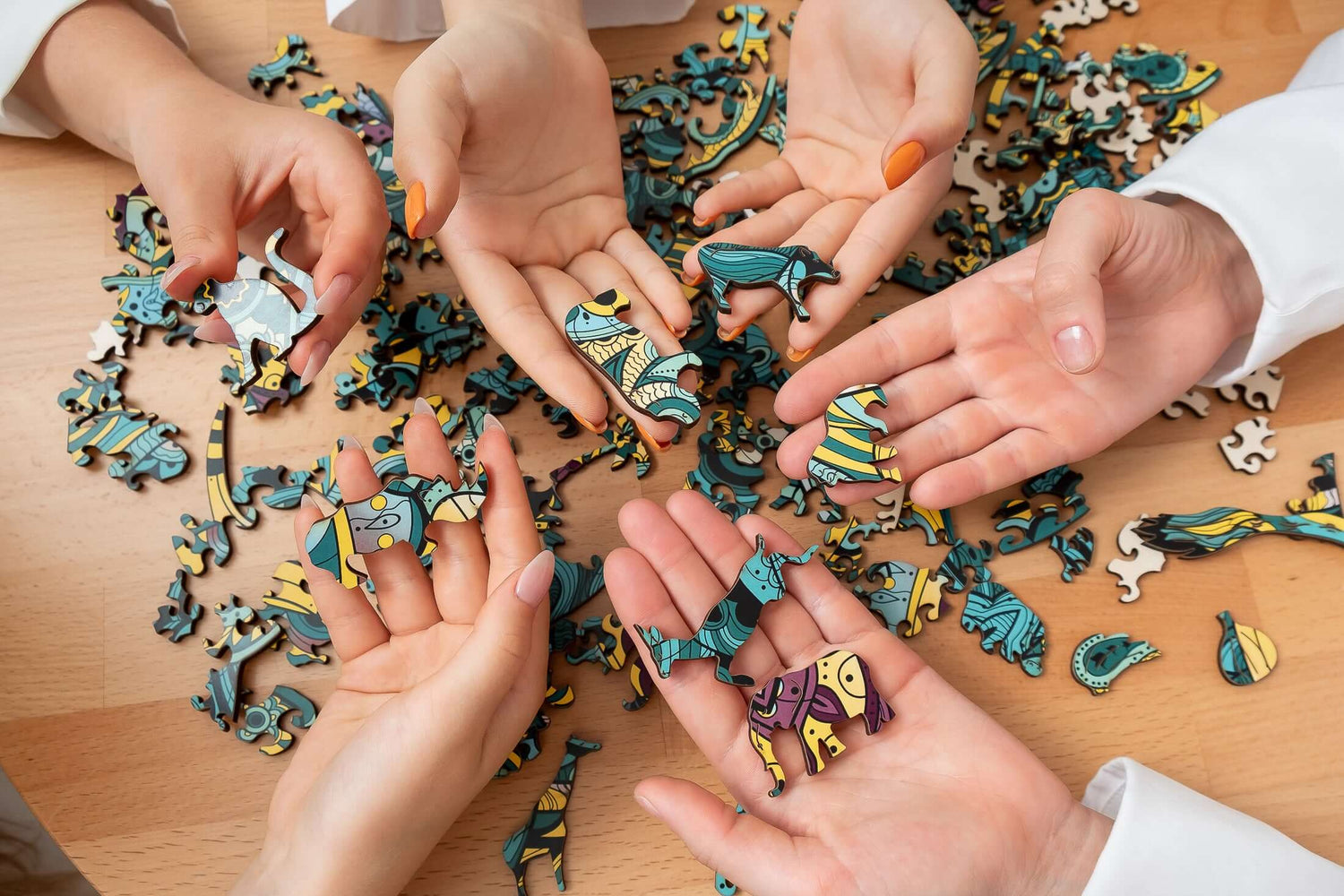
Puzzles for children according to their age
Share
Puzzles are an excellent way to help children learn and grow. Kids may get the confidence they need to face new tasks and experiences like the consciousness of emotions when faced with a new difficulty by being exposed to learning and problem-solving activities that begin as early as possible in their lives.
It all starts with a strong foundation, and as they grow into toddlers and then into school-age children, they develop new strategies and habits to help them learn better. The following is a great guide on selecting puzzles for children of various ages.
Puzzles According to Age
Now that you know the standards that should be considered when selecting a kid's puzzle let's put everything together to understand the requirements unique to each age group.
Baby-Friendly Puzzles (0-1 Years Old)
Babies may start playing with easy puzzles at six months or when they can sit up. Inset-type puzzles with a minimal number of pieces are ideal for young children. Baby puzzles should be big, chunky, and have no more than three pieces.
For children at this age, knob puzzles are an excellent choice. For babies, high-contrast visuals are a favourite as their vision grows. Stripes of black and white, or primary colours, are excellent. Wood is ideal for infants since they put everything in their mouths.
As a precaution, ensure the puzzle pieces you pick are big enough to prevent your child from choking. Also, avoid puzzles with paper graphics or stickers pasted on the pieces since these might be choking hazards if removed.
Puzzles for Young Kids (1-3 Years Old)
Kids may move from knob-inset puzzles to jigsaw puzzles. When they are two years old, puzzle-loving children may start working on 5- to 16-piece puzzles with big pieces. Keep it basic but make sure it's bright and crystal-clear like an animal wooden puzzle.
It is also preferable to have a lot of contrast. A wooden or cardboard puzzle is appropriate for this age range. When it comes to toddlers, the foam may not be the best choice since they often put objects in their mouths, and it is possible to bite them.
It is a good idea to introduce toddlers to various environments and animals. Trucks, boats, and aircraft are other popular topics for comics and children's books. Peg puzzles are an excellent option for children between the ages of three and eight. Smaller than knobs, pegs encourage youngsters to learn the pincer grasp, an important ability for handwriting and drawing since they are more difficult to grab.

Puzzles for pre-school children (3-5 Years Old)
Even a 24-piece jigsaw puzzle is possible for a 3-year-old by the time they reach that age. Older preschoolers, around the age of 4, prefer reasonably sized puzzles with up to roughly 48 pieces. These children like playing with pieces that have unusual forms.
Images with plenty of brilliant colours and well-defined figures are still preferable. Preschoolers will enjoy putting together a floor or frame jigsaw puzzle. As long as the cardboard is solid, you may use any puzzle material for toddlers. 3-year-olds may be trained to use the puzzle carefully, although they may be harsh.
In addition to being simple to handle, the pieces are also huge. Upon completion, youngsters will experience great accomplishment due to the puzzle's size. Pre-schoolers are nearly universally drawn to animal wooden puzzle-themed puzzles for children. Trucks and transportation, cartoons, legendary creatures like dragons and unicorns, dinosaurs, and outer spaces are other wonderful topics for discussion.
Early Elementary School Students' Puzzles (5-8 Years Old)
After completing 80 and 120-piece jigsaw puzzles, primary school pupils may tackle 180-piece puzzles with relatively tiny component sizes. Early elementary students are better at spotting piece shapes. Grass, sky, and water have low contrast.
Thus photographs with these elements present a good challenge for these children. Floor puzzles are an excellent choice for youngsters this age. The ocean, dinosaurs, animals and their habitats, cartoon characters, outer space, and more are some of the most popular topics for early elementary children.
In contrast to younger youngsters, five to eight-year-olds are always on the lookout for new challenges. Rotate puzzles often, or locate someone with whom you can often swap them out for new ones.
Puzzles for Middle School Students (8-11 Years Old)
Kids generally lose interest in jigsaw puzzles at this time. You can keep their interest by giving unique challenges with exactly the perfect level of difficulty. Students in the fourth or fifth grade may begin with 200 pieces.
There are various images to choose from, including paintings, landscapes, and elaborate patterns. Offer your older children a wide range of challenging puzzles and subjects that represent their preferences.
Irregularly shaped puzzles, especially 3-D, provide a new degree of complexity and appeal for older primary school children. Buildings, automobiles, or even the whole planet Earth might be the subject of these riddles.
Final thought
It's important to do your homework before handing out a puzzle to your youngster and to be selective about the problems you choose. Puzzles may help your kid learn, but they can also harm their development and cause them to suffer.
Puzzles that are too easy or too difficult for your kid may make them give up or question their talents, so it's best to steer clear of them. Use this guide to help you find appropriate puzzles for children age group and ensure they have a blast solving them.
